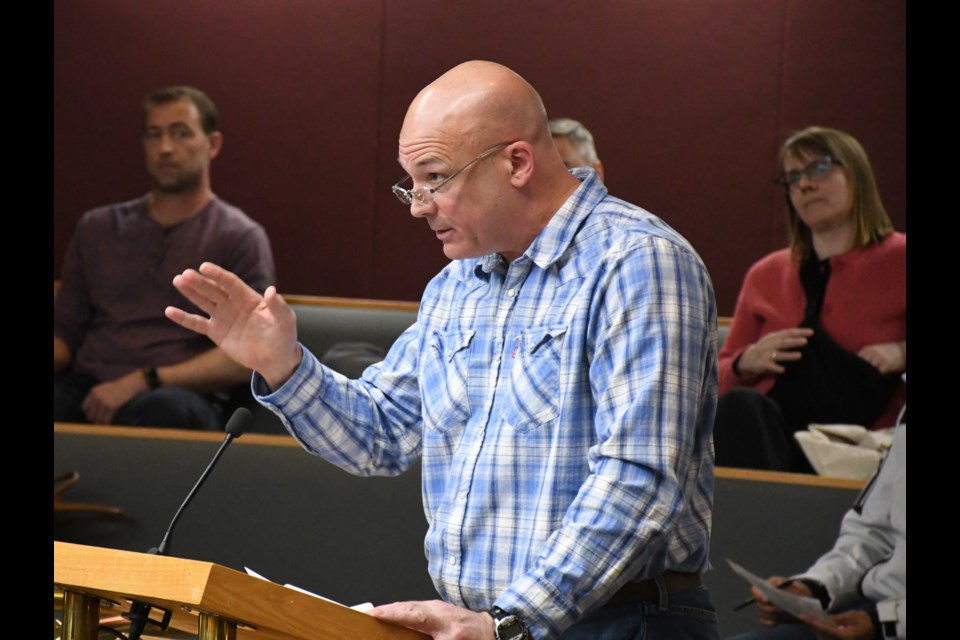MOOSE JAW — Several homeowners have expressed concerns — and some opposition — to a proposed zoning bylaw amendment that would allow federal government-mandated fourplexes to be constructed in Moose Jaw.
Chris Ward spoke during city council’s April 28 regular meeting, saying she received a notification letter from city hall about 10 days before the meeting. She didn’t think that allowed her — or anyone else — to consider this issue thoughtfully, considering the proposed amendment is “a fairly big change.”
“I’m very concerned as this (proposed amendment) is a very broad and inclusive rezoning (change that affects) almost our entire city,” she said.
Ward wondered whether city hall had studied how these changes would affect and reshape the community, while she wanted to know why the federal government was requiring these changes just so municipalities could apply for infrastructure funding.
Specifically, she was concerned that these changes would increase density in neighbourhoods designed for single-family dwellings and strain infrastructure and services.
“Without comprehensive infrastructure upgrades, residents will face more traffic, slower emergency response times and degraded essential services,” Ward said.
Most single-family homes are built with a driveway or garage that can house two vehicles easily, but fourplexes could contain four families with more than four vehicles, while such venues may lack adequate off-street parking, she continued. This could lead to overcrowded streets, blocked driveways, increased traffic congestion and safety hazards.
The “charm and cohesion” of most neighbourhoods are due to “thoughtful layout, mature landscaping and architectural consistency,” so building higher-density buildings usually results in removing trees and constructing larger-than-normal structures, Ward said. This “dramatically alters” neighbourhoods’ visual character and atmosphere, while noise and privacy issues are also concerns.
The homeowner was also worried about the potential effect on property values since “rapid and disruptive” densification causes uncertainty in the housing market. She noted that long-time homeowners may see their property values decline, while such redevelopments could displace long-time residents and destabilize established community networks.
“This change prioritizes developer interests over community cohesion (and pushes) families out of neighbourhoods (that) they have helped build and sustain for decades … ,” Ward said, adding that “thoughtful planning, respect for existing communities and investment in infrastructure” should guide council’s decisions and not short-term solutions with long-term consequences.
Homeowner John Vincent said he received the notification the Thursday before the council meeting, which gave him one business day to figure out “what this rather cryptic map meant” and to respond. He thought council “failed to provide due notice” and should defer making any decision for at least 60 days so residents could discuss this issue “openly and fairly.”
Continuing, Vincent said most people don’t know what’s going on with this proposed change, while he chastised council for holding a public hearing on federal election day when most people were unable to attend. He only attended because his work permitted him to leave early.
He also thought that information about the $66-million Crescent View Lift Station should have been included in the city’s notification letter since the municipality hopes Ottawa will provide $26 million to support it.
Meanwhile, the homeowner pushed back against comments from the city manager that these changes wouldn’t affect the character of Moose Jaw neighbourhoods, comments he said were “flatly false.”
“Many things will change, including … traffic, noise (and density). This is especially going to be a problem in the winter … (because) 30 per cent to 50 per cent of our parking disappears as soon as a snowplow touches our residential roads,” Vincent said
Vincent was also concerned that the fourplexes would cause a “demographic shift” since such buildings attracted a different demographic into a residential area filled with homeowners. Specifically, this shift could affect VLA, Sunningdale and South Hill, areas that homeowners have worked to build and maintain and pay “a tremendous premium to enjoy.”
“I believe it’s not just a privilege. It wasn’t something that was given to us,” he said, noting renters aren’t invested or care as much about their neighbourhoods. “We earned it, and we bought it, and we continue to pay rather shocking civic tax rates to maintain that.”
Vincent added that council’s desire for federal money has forced it to “sell out the potential character of the neighbourhoods that we live in and have paid for.”
The next regular council meeting is Monday, May 12.




